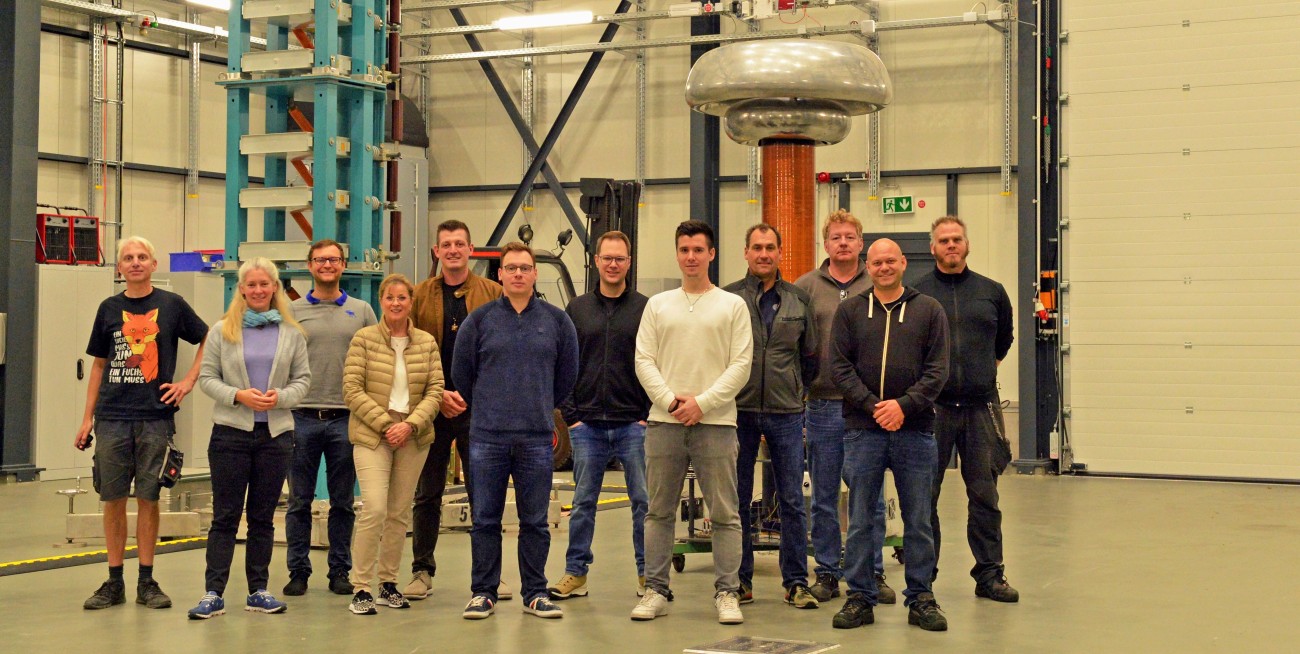Tobias Trautmann M.Sc.
Transient overvoltages in cabled high voltage transmission systems
Contact
Research project
Transient overvoltages in cabled high voltage transmission systems
additional information
An overview about currently open bachelor and master thesis can be found on the following supage:
The associated PDF-Files:
Open theses (BA/MA):
- -
Theses in progress (BA/MA):
- -
Completed theses (BA/MA):
- Simulation von Schaltüberspannungen in gasisolierten Schaltanlagen bei der Verwendung von Höchstspannungs-Erdkabeln (opens in new tab)
- Untersuchung des Einflusses der Verwendung von „kompakten Freileitungen“ auf schnell ansteigende Überspannungen in teilverkabelten 380kV-Netzabschnitten (opens in new tab)
- Untersuchung schnell ansteigender Überspannungen in teilverkabelten 380-kV-Netzabschnitten mit Monte-Cario-Studien in EMTP ATP (opens in new tab)
- Untersuchung von Resonanzphänomenen bei parallelen Systemen und freigeschalteten Phasen in teilverkabelten Hochspannungsübertragungsnetzen (opens in new tab)
- Simulation transienter Überspannungen bei Kurzschlüssen in teilverkabelten Hochspannungsübertragungsnetzen (opens in new tab)
If your are interested in simulations in the field of transient overvoltages and insulation coordination and want to write a bachelor- or master-thesis related to these topics, please contact me.
Due to an increasing amount of renewable energies in Germany the national high voltage transmission system is in a state of transition. In addition to a displacement of big generation units (e.g. windfarms in the North Sea instead of nuclear power plants) renewable energies cause a decentralized electrical energy generation. Therefore it is compulsory to modernise the national transmission system. In Germany this is organized in the grid development plan (“Netzentwicklungsplan”).
For this kind of development it is necessary to also use high voltage cables as alternative to overhead lines. By doing this there are some impacts on the transmission grid itself.
Overvoltages represent a significant thread for technical operating equipment and its insulation in the transmission grid. The purpose of insulation coordination is it to define the necessary insulation to keep the risk of failure of equipment at an acceptable range for realistic overvoltages for a real network configuration. This also includes surrounding ambient conditions and prevention measures such as surge arrestors.
In comparison to overhead lines, cables have a much higher capacitance, a much lower inductivity and a much lower surge impedance. These factors have an influence on resulting voltage surges in transmission grids. Additionally cables have a non-restoring insulation resulting in higher risks of outages.
For single point-to-point transmissions there has already been done quit an amount of research but there hasn’t been done any research on the impact of a higher amount of cables in the whole high voltage transmission grid.
Hence this research is focused on determining influences of high voltage cables on transient overvoltages in transmission grids. This is achieved by carrying out simulations with the electromagnetic transients program ATPDraw (EMTP-ATP).
Temporary overvoltages (TOV), slow front overvoltages (SFO) and fast front overvoltages (FFO) are being investigated in a grid model, extracted from the transmission grid. In the course of this the amount of high voltage cables is being increased, beginning at the momentarily situation of almost no high voltage cables.
This is supposed to result in confirmation of the currently used operating equipment and the design process of surge arrestors or in alternative specifications and additional measures. If necessary some recommendations for new test voltage levels for cables and cable accessories shall be made. Moreover different influences on resulting overvoltages, such as cross-bonding or sheath surge arrestors are going to be studied.

Error on loading data
An error has occured when loading publications data from TUbiblio. Please try again later.
-
; {{ creator.name.family }}, {{ creator.name.given }}{{ publication.title }}.
; {{ editor.name.family }}, {{ editor.name.given }} (eds.); ; {{ creator }} (Corporate Creator) ({{ publication.date.toString().substring(0,4) }}):
In: {{ publication.series }}, {{ publication.volume }}, In: {{ publication.book_title }}, In: {{ publication.publication }}, {{ publication.journal_volume}} ({{ publication.number }}), ppp. {{ publication.pagerange }}, {{ publication.place_of_pub }}, {{ publication.publisher }}, {{ publication.institution }}, {{ publication.event_title }}, {{ publication.event_location }}, {{ publication.event_dates }}, ISSN {{ publication.issn }}, e-ISSN {{ publication.eissn }}, ISBN {{ publication.isbn }}, DOI: {{ publication.doi.toString().replace('http://','').replace('https://','').replace('dx.doi.org/','').replace('doi.org/','').replace('doi.org','').replace("DOI: ", "").replace("doi:", "") }}, Official URL, {{ labels[publication.type]?labels[publication.type]:publication.type }}, {{ labels[publication.pub_sequence] }}, {{ labels[publication.doc_status] }} - […]


